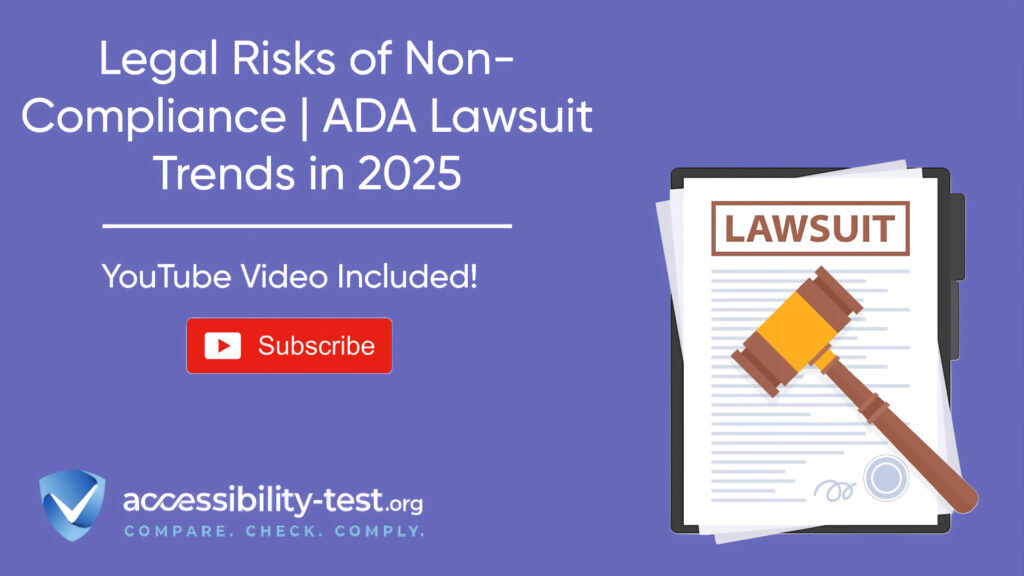Web Accessibility Litigation
Web accessibility litigation has become an increasingly prominent legal concern for organizations that maintain an online presence. As more businesses transition their services online, the need for compliance with accessibility standards has grown significantly. This shift is largely driven by the requirements set forth in the Americans with Disabilities Act (ADA), which aims to ensure individuals with disabilities have equal access to digital content and services. Consequently, a rising trend of lawsuits has emerged, targeting entities that fail to provide accessible online environments.
The significance of web accessibility litigation cannot be overstated. Many organizations, including retail, healthcare, and educational institutions, are now facing legal challenges due to the inaccessibility of their websites and applications. These legal actions often arise from the observation that a considerable portion of the population, estimated at over 61 million in the United States, faces some form of disability limiting their interaction with web platforms. Therefore, failing to address accessibility can lead to liability and financial repercussions.
Understanding the landscape of web accessibility litigation is vital for legal teams and corporate strategy departments. As compliance with ADA standards evolves, organizations must proactively adapt their web practices to minimize the risk of legal action. Legal professionals must stay abreast of ongoing litigation trends and relevant court rulings to effectively counsel their organizations. Moreover, businesses are increasingly identifying the strategic importance of implementing comprehensive accessibility measures not only to mitigate litigation risks but also to enhance their customer base and brand reputation by fostering an inclusive web experience.
In light of these developments, organizations are encouraged to adopt a forward-thinking approach to web accessibility. By doing so, they can better navigate the complexities of accessibility litigation while fulfilling their obligation to provide equitable service to all users.
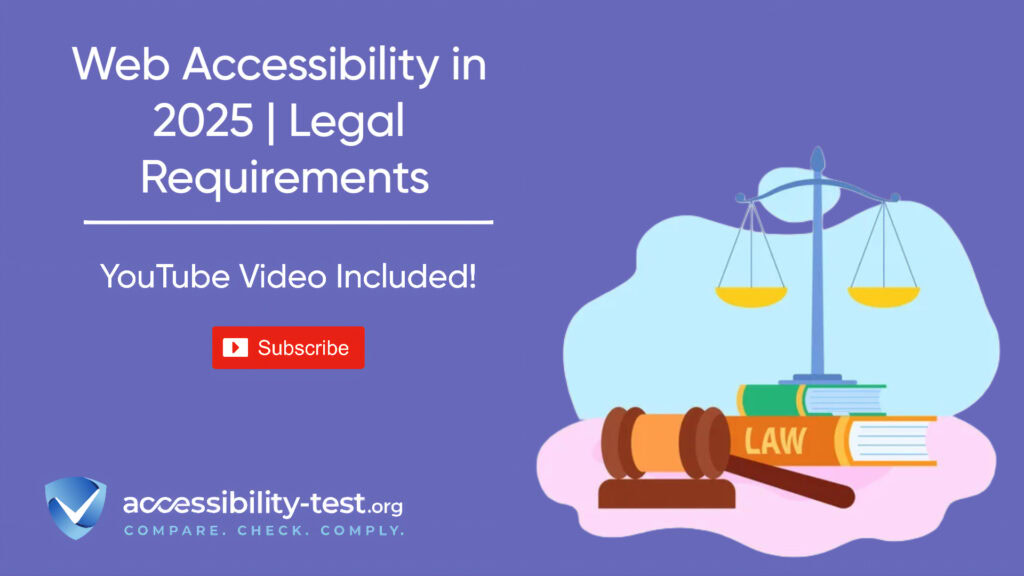
Surge in ADA Lawsuits Since 2020
Since 2020, there has been a notable surge in ADA-related digital accessibility lawsuits, with an astounding increase of 265%. This dramatic escalation highlights the urgent need for businesses to adapt their digital environments to comply with accessibility standards mandated under the Americans with Disabilities Act (ADA). The involvement of advocacy groups and specialized plaintiff firms has significantly raised awareness about the necessity of ensuring equal access for individuals with disabilities to digital services and content. These organizations play a pivotal role in advocating for the rights of disabled users and have been instrumental in catalyzing legal actions that challenge non-compliant websites as ‘places of public accommodation.’
The judicial recognition of websites as such places has fundamentally altered the legal landscape, compelling many online businesses to reconsider their digital strategies. As the emphasis on digital transformation intensifies, companies are increasingly obligated to integrate accessibility features into their websites and applications. Failure to do so not only risks exclusion of a sizable user demographic but also exposes businesses to the possibility of litigation. The correlation between accelerated digital transformation in various industries and the corresponding legal enforcement of accessibility standards cannot be overlooked. This trend underscores the importance of proactive engagement with web accessibility practices, which is not merely a legal obligation but also a responsible business strategy.
As we continue to witness an upsurge in ADA lawsuits, especially in the digital domain, businesses must prioritize compliance and adopt best practices to create more inclusive online experiences. The heightened focus on web accessibility is indicative of a broader societal shift towards inclusivity and equality, necessitating the urgent attention of digital stakeholders. This evolution calls for more comprehensive measures to ensure that all users, regardless of ability, can access online information and services equally, mitigating the risk of litigation while fostering a more equitable digital landscape.itize web accessibility now to ensure that your platform is welcoming to all. Let’s make the digital world a better place, together.
Key Industries at Risk
As the landscape of web accessibility continues to evolve, several specific industries have emerged as particularly vulnerable to litigation under the Americans with Disabilities Act (ADA). Among these, e-commerce and healthcare stand out due to their reliance on public-facing services that must be accessible to all individuals, including those with disabilities. The increasing trend of ADA lawsuits has put these sectors under scrutiny, with the potential for significant legal repercussions.
The e-commerce industry is at the forefront of web accessibility litigation. With a considerable portion of consumer transactions now taking place online, retailers are expected to provide accessible digital experiences. Websites and online platforms that do not conform to accessibility standards face targeted lawsuits, as individuals with disabilities seek to navigate complex online purchasing processes. Common issues include the lack of alternative text for images, poorly structured navigation, and inaccessible checkout processes. As a result, e-commerce companies must actively prioritize accessibility in their web design and development to mitigate the risk of litigation.
Similarly, the healthcare sector presents its own unique challenges regarding web accessibility. Healthcare providers increasingly offer services online, requiring patients to interact with websites for scheduling appointments, accessing medical records, and receiving information about treatment options. Unfortunately, many healthcare websites fall short of meeting accessibility standards, specifically in their design and functionality. Common barriers include improperly coded forms, inadequate screen reader compatibility, and a lack of accessible telehealth services. These vulnerabilities expose healthcare institutions to significant legal challenges in the event of non-compliance with ADA guidelines.
In conclusion, industries such as e-commerce and healthcare face heightened risks of ADA litigation due to their public-facing services. By understanding the specific challenges and vulnerabilities inherent in their digital platforms, these sectors can take proactive steps to enhance web accessibility, ultimately reducing the likelihood of legal issues while fostering inclusivity for all users.
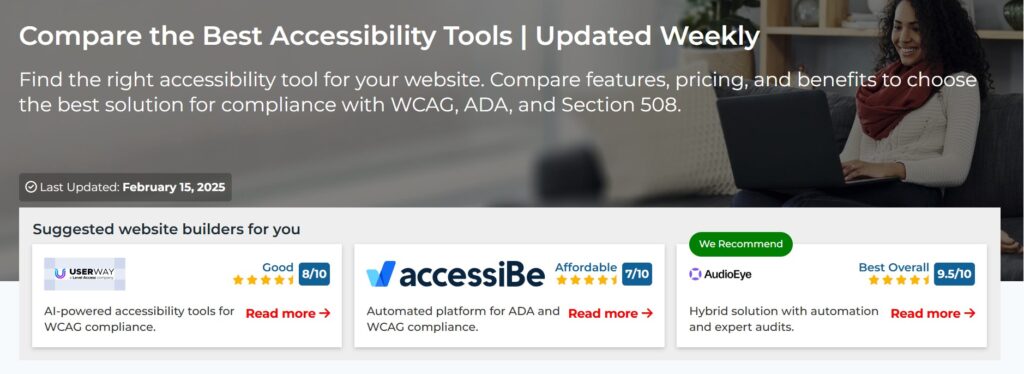
Common Violations in ADA Lawsuits
In the context of the Americans with Disabilities Act (ADA), certain accessibility violations frequently emerge in litigation. Identifying these recurring issues is crucial for organizations aiming to ensure compliance and avoid potential lawsuits. One of the most prevalent violations concerns keyboard navigation failures. Websites that do not allow users to navigate solely via keyboard can create significant obstacles for individuals with disabilities. This limitation proves detrimental, particularly for users with mobility impairments who rely on keyboard shortcuts to access online content. Failure to address this issue can lead to exclusion from vital resources and services, underscoring the need for developers to prioritize keyboard accessibility in their designs.
Another common violation involves insufficient color contrast. Websites often fail to provide adequate contrast between text and background colors, making it difficult for visually impaired users to read content comfortably. The Web Content Accessibility Guidelines (WCAG) emphasize the importance of adequate color contrast to ensure all users can effectively engage with web content. Ignoring this compliance issue not only limits access but can also result in legal repercussions for organizations that do not prioritize visual accessibility. Organizations must be diligent in evaluating and improving color contrast to foster an inclusive digital environment.
Additionally, improper use of alternative text for images can negatively impact users who rely on screen readers. Failure to provide descriptive alternative text hinders users with visual impairments from fully understanding the context of visual elements on a website. This oversight not only hampers user experience but also invites potential ADA scrutiny. In light of these common violations, it is evident that proactive solutions are essential. Implementing accessibility measures during the development phase not only aids in compliance with ADA standards but also enriches the overall user experience for individuals with disabilities. By prioritizing accessibility, organizations can minimize legal risks and promote inclusivity across their digital platforms.clusive digital experiences that benefit everyone, reinforcing the importance of a long-term vision in their web strategies.
Financial and Reputational Costs of Non-Compliance
The rising trend of web accessibility litigation has profound implications for businesses, particularly concerning financial and reputational costs associated with non-compliance with the Americans with Disabilities Act (ADA). Organizations found to be non-compliant may face significant legal repercussions, with average settlement costs increasing steadily. Recent data indicates that settlements can range from thousands to millions of dollars, depending on the severity of the discrepancies and the size of the company involved. For many small businesses, these costs can be devastating, potentially leading to budgeting constraints or even closure.
In addition to settlement expenses, legal fees further compound the financial burden. Engaging legal representation to defend against an ADA lawsuit can entail costs that escalate quickly, often exceeding what companies initially budgeted for compliance-related issues. Furthermore, the litigation process frequently requires businesses to divert resources away from operational imperatives, further hindering growth and sustainability. Small enterprises, which typically operate on tighter profit margins, are particularly vulnerable to these disruptions. Without adequate financial reserves, the costs incurred from lawsuits can have far-reaching consequences, extending beyond immediate legal fees to impact future business ventures and partnerships.
The aftermath of a legal settlement is often characterized by ongoing compliance responsibilities. Organizations may find themselves in a continuous cycle of expenses related to web accessibility, as ensuring compliance with ADA standards requires regular audits, updates, and potentially new technology investments. Such ongoing costs represent not only a financial burden but also a commitment to creating an inclusive digital environment. Should companies fail to maintain compliance, they risk further legal action, perpetuating a costly cycle that can undermine their overall business model.
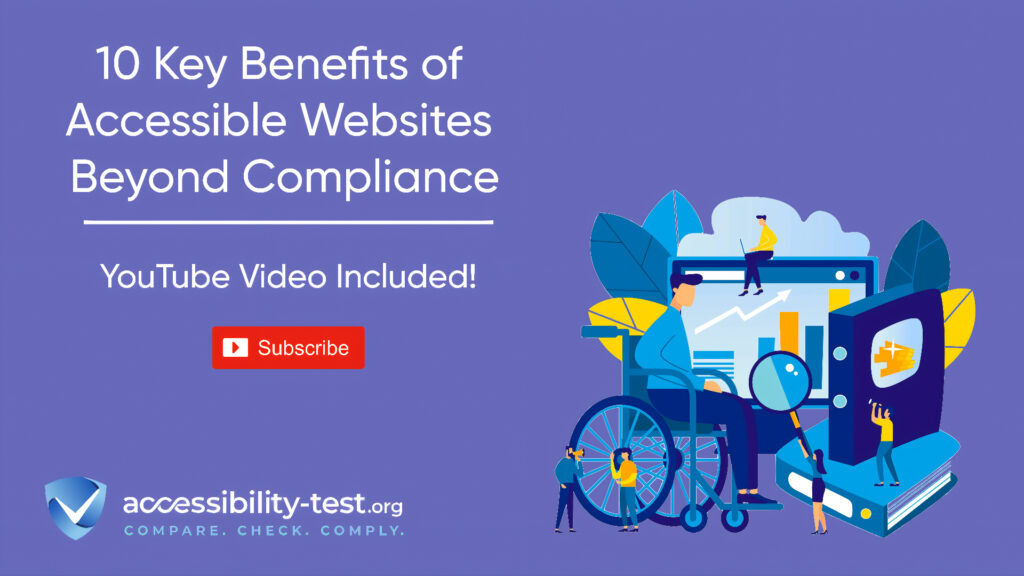
Impact on Brand Trust and Customer Loyalty
The increasing number of ADA lawsuits presents a significant challenge for organizations striving to maintain brand trust and foster customer loyalty. These legal challenges, particularly those revolving around web accessibility, can have profound implications for how consumers perceive a brand. When a company becomes embroiled in litigation regarding accessibility issues, it often faces public scrutiny that can lead to reputational damage. Recent studies indicate that a majority of consumers take a dim view of companies that are non-compliant with accessibility standards, perceiving them as indifferent to the needs of all users.
Moreover, brand reputation is closely tied to the perceived commitment to inclusivity and social responsibility. Organizations that fail to address web accessibility may inadvertently convey a message of exclusivity, alienating potential customers. This perception can significantly decrease customer loyalty, as consumers increasingly favor brands that demonstrate ethical practices and attentiveness to diverse needs. Research shows that nearly 70% of consumers have indicated they would reconsider their support for a brand that faces ADA litigation, suggesting that maintaining compliance is crucial not just for legal reasons but also for building trust with the customer base.
The long-term public relations implications for organizations facing web accessibility lawsuits are profound. Rebuilding trust after a legal setback often requires extensive effort and investment in remedial actions, including enhancing accessibility features on websites and engaging in transparent communication with stakeholders. Active measures, such as public commitments to accessibility standards and outreach programs aimed at various communities, can aid in restoring a company’s image. By prioritizing web accessibility, organizations not only mitigate the risk of lawsuits but also reinforce their brand promise to nurture an inclusive environment, ultimately securing customer loyalty and long-term trust.
Proactive Compliance Strategies
As organizations strive to navigate the complexities of web accessibility and adhere to the Americans with Disabilities Act (ADA) standards, a proactive approach is essential. Implementing effective compliance strategies not only mitigates the risk of litigation but also promotes inclusivity and enhances user experience. One of the foundational steps in this process is conducting accessibility audits. These audits help identify existing barriers in digital content, whether on websites or mobile applications, and provide a clear roadmap for necessary enhancements. Regular audits are crucial, as they ensure ongoing compliance and alignment with evolving standards and guidelines.
In addition to audits, it is vital for organizations to invest in comprehensive training programs for their development teams. Educating team members about the principles of accessible design fosters a culture of awareness and responsibility. Through workshops and hands-on training, developers can acquire the skills needed to create content that meets ADA standards. This practice not only equips teams with the knowledge necessary to implement accessibility from the outset but also empowers them to take ownership of the process.
Furthermore, integrating accessibility into corporate policy establishes it as a fundamental business value. By making accessibility a core component of project planning and execution, organizations signal their commitment to inclusivity. This can be achieved by formulating clear policies that prioritize accessibility in design, development, and content management. Encouraging cross-departmental collaboration ensures that all facets of the organization understand their role in maintaining compliance with ADA standards. By adopting these proactive compliance strategies, organizations can effectively navigate the evolving landscape of web accessibility litigation, not only safeguarding against legal risks but also promoting a more inclusive digital environment for all users.
The Essential Shift Towards Accessibility
As 2025 approaches, the conversation surrounding web accessibility is gaining unprecedented momentum within the legal landscape. Organizations must recognize that embracing accessibility is no longer a mere suggestion; it is a fundamental business requirement. The shift towards ensuring that all digital content is accessible to individuals with disabilities not only fulfills legal obligations but also promotes inclusivity and diverse engagement.
Throughout this discussion, we have seen how evolving legal frameworks and increasing litigation highlight the critical need for businesses to prioritize web accessibility. The legal risks associated with non-compliance can be substantial, leading to costly lawsuits and reputational damage. By taking proactive measures to identify and eliminate accessibility barriers, organizations can significantly reduce their exposure to such legal challenges. This approach not only protects businesses but also fosters loyalty among customers who value inclusivity.
Moreover, aligning with accessibility standards can enhance user experience across the board. It is essential for organizations to view accessibility not merely as a compliance issue but as an opportunity to innovate and expand their customer base. The ongoing advancements in technology offer a wealth of tools and resources that can aid businesses in their quest for accessible digital environments. Investing in accessibility can lead to improved websites, applications, and overall digital communication strategies, creating a win-win situation for both the business and its users.
In conclusion, the transition towards prioritizing web accessibility requires a committed effort within organizations. By understanding the legal implications and recognizing the inherent value of inclusivity, businesses can take substantial steps toward mitigating risks, enhancing brand reputation, and ultimately, creating a more equitable digital landscape for all. The time to act is now, and the benefits of embracing web accessibility are clear and compelling.
Moving Towards Inclusive Digital Spaces
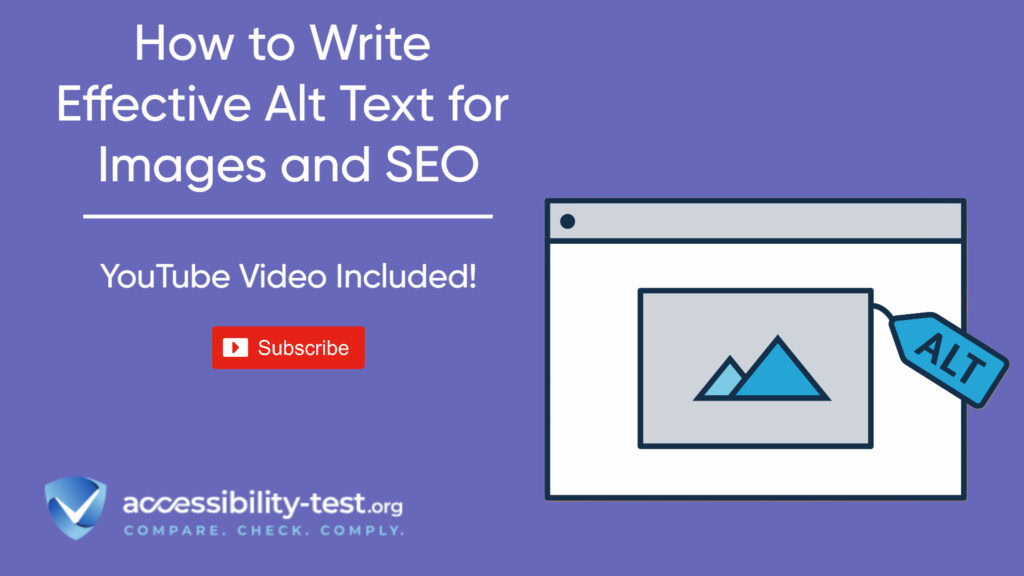
As we witness a surge in web accessibility litigation, it has become imperative for businesses to evaluate the compliance of their websites with the Americans with Disabilities Act (ADA) standards. The accessibility of digital content is not just a best practice; it is a legal requirement that increasingly affects organizations of all sizes. To protect your business from potential lawsuits and foster inclusivity, taking proactive steps is essential.
To begin, conducting a free compliance scan of your website is an important first step. Numerous online tools are available that can help identify accessibility barriers quickly. These scans typically evaluate aspects of your website, such as color contrast, alt text for images, navigational structure, and keyboard accessibility. By utilizing these tools, businesses can gain a comprehensive understanding of their current level of compliance with ADA standards.
After performing a scan, it is equally important to review the generated report to understand the specific areas requiring improvement. This assessment allows you to prioritize changes effectively. Engaging a web accessibility consultant can further enhance this process, providing tailored recommendations aimed at reducing risks associated with litigation. Additionally, implementing ongoing accessibility practices will not only bring you into compliance but also improve the overall user experience for all visitors, thereby expanding your customer base.
In a time when digital presence significantly impacts brand reputation and customer loyalty, it is vital to ensure that your website is accessible to every individual, including those with disabilities. By prioritizing web accessibility, you are not only safeguarding your business against legal implications but also demonstrating a commitment to inclusivity. Start today by assessing your website’s compliance and taking actionable steps towards creating a more accessible digital environment.
Run a FREE scan to check compliance and get recommendations to reduce risks of lawsuits
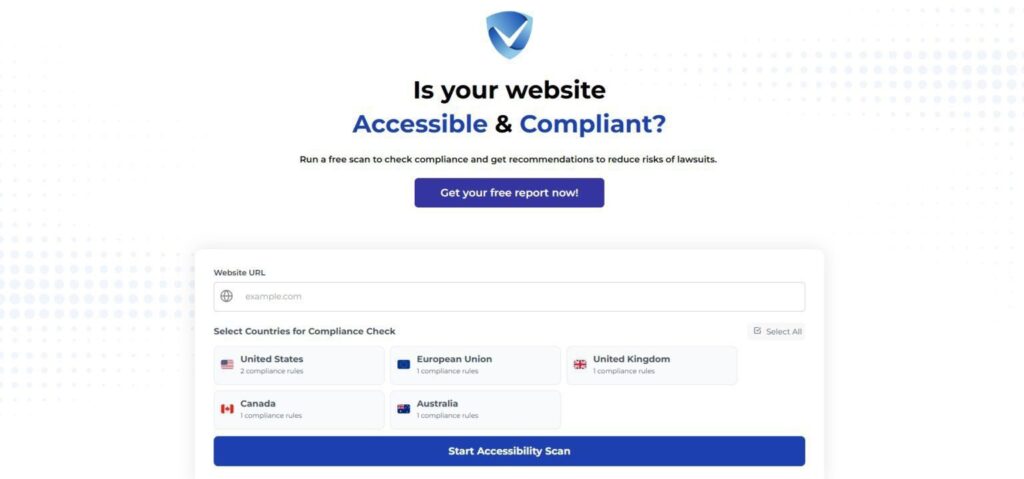
Don’t wait to take action—audit your site’s SEO-accessibility health today with our free tool! Identify gaps, implement fixes, and ensure compliance with the latest guidelines to dominate SERPs while creating an inclusive experience for all users. Take the first step toward accessibility success now!



